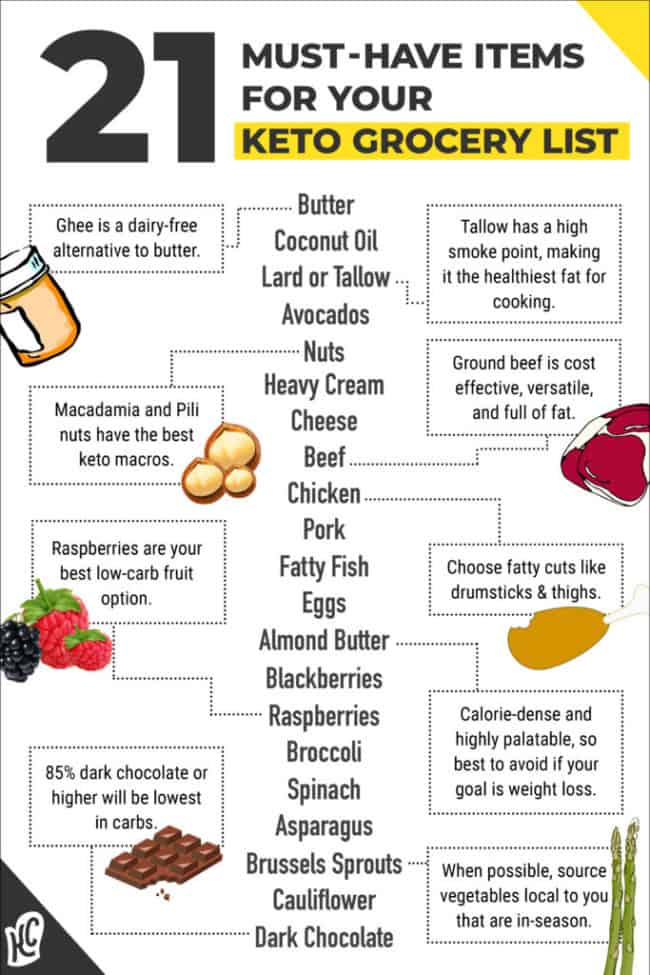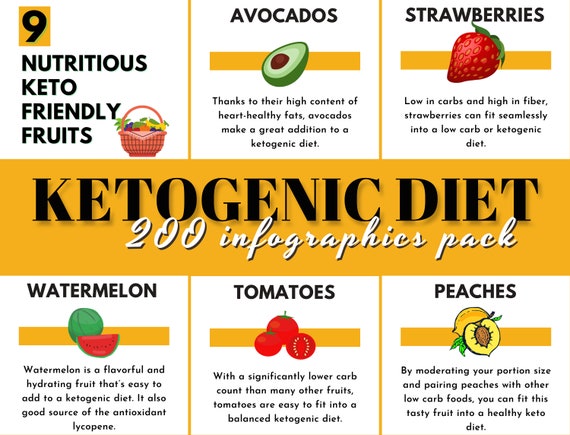Unlock the secrets of rapid weight loss and increased energy with our comprehensive Quick Keto Diet Start Guide today!
Table of Contents
Introduction to the Keto Diet
Welcome to the wonderful world of the keto diet! Have you ever heard of this super cool way of eating that many people are talking about? Well, today I’m going to explain the keto diet to you in a fun and easy way so that you can understand why it’s such a popular choice for lots of folks.
So, what exactly is the keto diet, you ask? Let me break it down for you in simple terms. The keto diet is a way of eating that focuses on consuming foods that are low in carbs and high in healthy fats. By following this eating plan, your body enters a state called ketosis, which is like a magical fat-burning mode that helps you lose weight and feel super energized.
People love the keto diet because it can help them reach their health goals and feel amazing. Plus, the yummy foods you get to eat on this plan will make you jump for joy!
What is Ketosis?
Ketosis is a key concept to understand when starting the keto diet. Let’s break it down in simple terms: Ketosis is a state in which your body switches from using carbohydrates for energy to using fats. When you eat very few carbs, your body begins to burn fat for fuel instead, producing molecules called ketones.
Why Ketosis Matters
Now, why is ketosis important on the keto diet? Well, when your body is in ketosis, it becomes a fat-burning machine! This means that your body is using stored fat as its primary source of energy, which can help you lose weight.
Starting the Keto Diet
Embarking on the keto diet journey is exciting and can bring about some amazing changes in your body. Here are simple steps to kickstart your keto diet for beginners.
Step-by-Step Kickoff
1. Clean out your pantry: Get rid of sugary snacks, grains, and high-carb foods.
2. Stock up on keto essentials: Fill your kitchen with keto-friendly foods like meats, fish, eggs, cheeses, low-carb vegetables, and healthy fats.
3. Plan your meals: Create a simple keto meal plan for the week to ensure you stay on track.
4. Stay hydrated: Drink plenty of water to help your body adjust to ketosis.
5. Monitor your macros: Keep an eye on your carbohydrate, protein, and fat intake to stay within keto guidelines.
6. Get moving: Incorporate some light exercise into your routine to enhance the effects of the keto diet.
By following these easy steps, you’ll be on your way to a successful start on the keto diet and on your journey to a healthier you.
Understanding a Keto Diet Plan
When following a keto diet plan, it’s essential to know which foods you can enjoy and which ones you should avoid. Keeping it simple and easy to understand, let’s break down the basics of what a keto diet plan entails.

Image courtesy of via Google Images
Foods to Enjoy
On a keto diet, you can enjoy foods that are high in fats, moderate in proteins, and low in carbohydrates. Some keto-friendly foods include:
- Meat and poultry
- Fish and seafood
- Eggs
- Cheese
- Avocado
- Healthy oils like olive oil and coconut oil
Foods to Avoid
There are also foods that you should avoid while on a keto diet. These are typically high in carbohydrates and can hinder your body from entering ketosis. Some foods to steer clear of include:
- Sugary treats like candy and cake
- Bread and pasta
- Rice and grains
- Fruit high in sugar like bananas and grapes
- Potatoes and other starchy vegetables
Sample Keto Meal Plans
Now, let’s give you some ideas for what your meals can look like on a keto diet. These sample meal plans are designed to be simple, easy to follow, and delicious.
Foods to Enjoy
On a keto diet, you’ll want to focus on foods that are high in healthy fats, moderate in protein, and low in carbohydrates. Here are some examples of foods you can enjoy:
- Fatty fish like salmon, mackerel, and sardines
- Avocados
- Olive oil and coconut oil
- Nuts and seeds
- Low-carb vegetables like spinach, broccoli, and cauliflower
- Cheese and other dairy products
Foods to Avoid
While following a keto diet, there are also foods you should avoid as they are high in carbs and can kick you out of ketosis. Here are some examples:
- Sugary foods like candy, soda, and desserts
- Bread, pasta, and grains
- Fruits high in sugar like bananas and grapes
- Starchy vegetables like potatoes and corn
- Sweetened yogurts and other dairy products
By including the foods to enjoy and avoiding those to steer clear of, you’ll stay on track with your keto diet and continue to burn fat for energy.
Tips for Keto Beginners
Starting a new diet can be challenging, especially one like the keto diet. Here are some helpful tips to guide you through your journey as a keto beginner:

Image courtesy of via Google Images
Keep It Simple
When you’re just getting started with the keto diet, it’s essential to keep things simple. Focus on basic, easy-to-prepare meals to make the transition smoother.
Meal Prep is Key
Planning your meals in advance can save you time and help you stay on track with your keto goals. Consider preparing meals and snacks in batches to have them readily available when hunger strikes.
Stay Hydrated
Drinking plenty of water is crucial on the keto diet. Not only does it help keep you hydrated, but it can also aid in digestion and reduce the symptoms of keto flu.
Don’t Be Too Hard on Yourself
Remember, it’s normal to slip up occasionally when starting a new diet. Instead of being too hard on yourself, acknowledge your setbacks and focus on getting back on track with your next meal.
Seek Support
Joining a community or finding a diet buddy can provide you with the support and encouragement you need to stick with the keto diet. Sharing experiences and tips with others can make the journey more enjoyable.
Listen to Your Body
Every person’s body is different, so what works for one person may not work for another. Pay attention to how your body responds to the keto diet and make adjustments accordingly.
By following these tips and staying committed to your goals, you’ll be well on your way to success as a keto beginner!
How to Track Your Progress
When you start on the keto diet, it’s essential to track your progress to see how well you’re doing and make necessary adjustments. Here are simple ways to measure your success:
Keep a Food Journal
Writing down everything you eat and drink each day can help you stay on track with your keto diet plan. It allows you to see if you’re sticking to the right kinds of foods and staying within your daily carb limit.
Take Body Measurements
Instead of solely relying on the scale, take measurements of your body, such as waist, hips, and thighs. Sometimes, changes in your body composition may not be reflected in your weight but can still show progress.
Monitor Energy Levels
One of the benefits of the keto diet is increased energy levels. Keep track of how you feel throughout the day. If you notice a boost in energy and fewer energy crashes, it’s a sign that your body is adjusting well to ketosis.
Check Ketone Levels
Using urine strips or a blood ketone meter, you can test the levels of ketones in your body. This can help you ensure you are in ketosis, which is crucial for burning fat for fuel.
By using these simple tracking methods, you can stay motivated and see the progress you’re making on the keto diet. Remember, everyone’s body is different, so be patient and consistent with your efforts.
Challenges and Solutions
Embarking on a new diet like the keto diet can be exciting, but it also comes with its fair share of challenges. Let’s explore some common hurdles that beginners might face on the keto diet journey and discover simple solutions to overcome them.

Image courtesy of via Google Images
Challenge: Temptation of Non-Keto Foods
It’s normal to feel tempted by tempting non-keto foods, especially in social situations or when stress hits. Resisting these temptations can be tough.
| Meal | Food Item | Amount |
|---|---|---|
| Breakfast | Scrambled eggs | 2 eggs |
| Lunch | Grilled chicken | 6 oz |
| Dinner | Salmon fillet | 4 oz |
| Snack | Almonds | 1/4 cup |
Solution:
Plan ahead by preparing keto-friendly snacks and meals to have on hand when cravings strike. Having healthy options readily available can help you stay on track and avoid giving in to temptation.
Challenge: Lack of Variety in Meals
Eating the same keto meals repeatedly can get boring, leading to a lack of motivation to stick to the diet.
Solution:
Explore new recipes and get creative with your meal planning. There are countless delicious keto recipes available online that can spice up your meals and keep things interesting. Experimenting with different ingredients and flavors can make the keto diet more enjoyable.
Challenge: Keto Flu Symptoms
Some beginners may experience symptoms like fatigue, headaches, and irritability when starting the keto diet, known as the “keto flu.”
Solution:
Stay hydrated, replenish your electrolytes, and make sure you’re getting enough rest. These symptoms are typically temporary as your body adjusts to the ketogenic state, so hang in there and be patient with yourself during this transition period.
Challenge: Social Pressures and Criticism
When following a specific diet like keto, you may face criticism or pressure from others who don’t understand or support your choices.
Solution:
Remember that you’re making a positive change for your health and well-being. Surround yourself with a supportive community of like-minded individuals, whether in person or online, who can offer encouragement and understanding. Educate those close to you about the keto diet and why it’s important to you, helping them see things from your perspective.
By acknowledging these challenges and implementing these solutions, you can navigate the keto diet with greater ease and confidence. Remember, everyone’s journey is unique, so find what works best for you and stay committed to your health goals.
The Importance of Hydration and Electrolytes
Staying hydrated is crucial for our bodies to function properly. When following a keto diet, it’s even more important to pay attention to our water intake and electrolyte levels. Let’s dive into why hydration and electrolytes matter on a keto diet.
Why Hydration Matters
Water is essential for overall health. It helps regulate body temperature, aids in digestion, and carries nutrients to cells. On a keto diet, your body may excrete more water and electrolytes, making hydration key to preventing dehydration and potential side effects like headaches and fatigue.
The Role of Electrolytes
Electrolytes, such as sodium, potassium, and magnesium, play a crucial role in maintaining proper fluid balance in the body. When following a keto diet, you may need to pay more attention to replenishing these electrolytes, as lower carbohydrate intake can impact electrolyte levels.
Ensuring an adequate intake of electrolytes can help prevent symptoms like muscle cramps, fatigue, and lightheadedness, improving your overall well-being while on a keto diet.
How to Stay Hydrated and Balanced
To maintain proper hydration and electrolyte balance on a keto diet, consider the following tips:
- Drink plenty of water throughout the day, aiming for at least 8-10 cups.
- Include electrolyte-rich foods in your diet, such as leafy greens, avocados, nuts, and seeds.
- Consider adding a sprinkle of sea salt to your meals or enjoying a cup of bone broth for added electrolytes.
- Avoid excessive caffeine or alcohol consumption, as they can contribute to dehydration.
By prioritizing hydration and electrolyte balance, you can optimize your keto experience and feel your best while following this dietary approach.
When to See Results
Starting a new diet like the keto diet can be exciting, and you may be eager to see results quickly. But it’s essential to understand that everyone’s body is different, and changes may not happen overnight. Here’s a realistic timeline for when beginners might start to notice changes from the keto diet:
After the First Week:
During the first week of starting the keto diet, many people experience rapid weight loss. This initial weight loss is often due to a decrease in water retention as your body uses up its glycogen stores. While this may seem like significant progress, it’s important to remember that this initial drop is mostly water weight.
After 2-4 Weeks:
As you continue to follow the keto diet, you may start to notice more sustainable changes. By this point, your body should be entering a state of ketosis, where it begins burning fat for fuel instead of carbohydrates. You may notice increased energy levels, improved focus, and a decrease in cravings for sugary foods.
After 1-3 Months:
After consistently following the keto diet for 1 to 3 months, you may begin to see more significant changes. Many people experience noticeable weight loss, improved body composition, and better overall health markers such as lower blood sugar levels and improved cholesterol profiles.
Keep in mind that everyone’s results will vary based on factors like starting weight, metabolic rate, and adherence to the keto diet. It’s essential to be patient with yourself and give your body time to adjust to this new way of eating.
Summing It Up
Starting a keto diet may seem overwhelming at first, but it’s all about simplifying things and focusing on the basics. Here’s a quick recap of what you need to know to kickstart your keto journey:
Introduction to the Keto Diet
The keto diet is a popular eating plan that focuses on low carbs and high fats. It helps your body enter a state called ketosis, where it burns fat for fuel instead of carbs. This leads to weight loss and improved energy levels.
What is Ketosis?
Ketosis is the process where your body switches from using carbs for energy to burning fats. This metabolic state helps you shed excess fat and boosts your overall health.
Starting the Keto Diet
Follow these simple steps to begin your keto journey: eliminate sugary foods and grains, focus on low-carb, high-fat meals, and stay consistent with your eating habits.
Understanding a Keto Diet Plan
A keto diet plan should include plenty of healthy fats, moderate protein, and very few carbs. Enjoy foods like meat, fish, eggs, nuts, and veggies while avoiding sugary snacks, bread, and pasta.
Remember, the key to success on the keto diet is to stay committed, stay hydrated, and stay positive. Embrace the process, listen to your body, and enjoy the benefits of this transformative way of eating!
Frequently Asked Questions (FAQs)
Is the keto diet safe for everyone?
Yes, the keto diet is generally safe for most people. However, it’s essential to consult with a healthcare professional before starting any new diet, especially if you have existing health conditions or concerns. Some individuals, such as those with diabetes or other metabolic disorders, may need to make adjustments to the keto diet to ensure it is safe and suitable for their specific needs.
How long should I stay on the keto diet?
The duration for which you stay on the keto diet varies depending on your health goals and needs. Some people choose to follow the keto diet for a short period to kickstart weight loss or achieve other health benefits, while others may adopt it as a long-term lifestyle change. It’s important to listen to your body and consult with a healthcare provider to determine the best approach for you.
Can I eat fruit on the keto diet?
Fruits are typically higher in sugars, which can hinder the process of ketosis, the state in which the body burns fat for energy. As a result, many fruits are restricted on the keto diet. However, there are low-carb fruit options such as berries that can be enjoyed in moderation. It’s essential to be mindful of your fruit intake and choose options that align with the goals of the keto diet.






